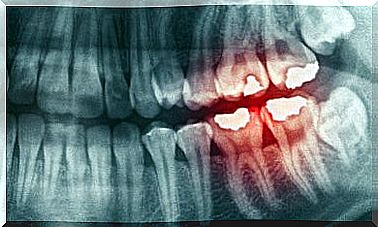Measure Your Heart Rate Correctly: This Is How It Works!
If you measure your pulse regularly, you can recognize possible deviations and diagnose cardiovascular diseases at an early stage. The procedure is very simple and can be done on different parts of the body. But how can you measure the pulse correctly?

Knowing how to properly measure your heart rate is very useful . Because this way we know our heart rhythm and recognize possible deviations quickly. It is a very simple precautionary measure that gives us basic information about our cardiovascular condition.
The resting heart rate or normal heart rate can be measured at different parts of the body. You count the number of pulse waves that are created every minute by the contractions with which the heart pumps the blood into the circulation.
So we are talking about the heart rate, which is usually expressed in pulses per minute. For example, if you take your heart rate for 60 seconds and count 70 heartbeats, it means the heart beat 70 times in one minute.
Although this method is fundamental for a quick diagnosis of possible heart disease, many do not know how to correctly measure the heart rate. That’s why we’re explaining this to you in today’s article.
What is the pulse for?

Measuring your heart rate is very useful because it tells you how often your heart is beating per unit of time (usually a minute). The normal resting heart rate is between 60 and 100 heartbeats per minute.
This will help you determine if you have tachycardia (rapid heartbeat) or bradycardia (slow heartbeat). Tachycardia is when the heart beats more than 100 times per minute. Bradycardia is when the heartbeats per minute are less than 60.
Both downward and upward deviations can indicate cardiovascular problems. So there may be a risk to the heart.
In most cases, however, these are normal situations in which the heart adapts its rhythm to carry sufficient blood to all organs and body tissues.
For example, while you are exercising, it is quite normal for your heart rhythm to accelerate. You notice tachycardia when you measure your heart rate. The pulse rate also accelerates in situations of fear, stress or when you are in danger.
People who exercise daily tend to have a lower heart rate than average. Some athletes have only 40 heartbeats per minute without this being a sign of illness.
So what is the purpose of measuring the pulse?
Of course, measuring your heart rate is very useful for checking your physical condition and observing your reaction to exercise. You can also use it to recognize the limits that you will reach in physical training.
You should also not forget that you can also use it to support the early diagnosis of certain diseases. In serious cases, such as an aortic dissection, measuring the pulse can help identify this situation in time to save the patient’s life.
How do you measure the pulse correctly?

To measure your resting heart rate, you should be in a relaxed state and not do any sport beforehand.
This method can be done on different parts of the body, but it is easiest to do it on the neck or wrist. It is best to start at the neck, because this is where the pulse can best be felt.
You need a chronometer. You can use your mobile phone or a watch for this, for example. Then proceed as follows:
- Place your index and middle fingers on your neck under your chin. Then press the area gently until you feel the heartbeat. However, it shouldn’t be too tight so as not to affect the results.
- As soon as you have found the pulse, you activate the timer and start counting. You can measure for a full minute or half a minute. If you only count for 30 seconds, you will have to double the result afterwards.
As already mentioned, the result of the resting heart rate should normally be between 60 and 100. If your pulse is too fast or you notice any irregularities, you should see a doctor for an examination.
Conclusion
Measuring the pulse is a very simple procedure that is very useful for general control and also during training. You can measure your heart rate on your wrist, neck, stomach, etc.
If you have problems, you can also buy a heart rate monitor. Don’t forget to discuss any abnormalities with your doctor.









